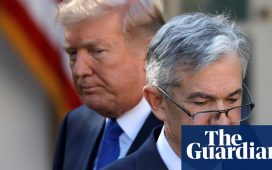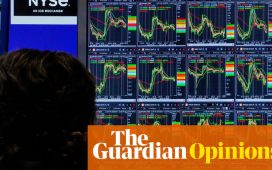Unlock the US Election Countdown newsletter for free
The stories that matter on money and politics in the race for the White House
It happened. Joe Biden has stepped down from the presidential race and endorsed Kamala Harris as the next Democratic candidate. Both moves are good decisions; over the past few weeks Biden’s poll numbers have plummeted, while Harris’s have steadily risen. The chaos of an open convention is not something most Democrats want, and I expect the party will quickly rally around Harris. But while the change puts an end to the suspense, it doesn’t yet solve a major issue for Democrats: how to lock in working-class voters in November.
Blue-collar voters have never been Harris’s target audience. She’s seen more as a shiny California former lawyer and prosecutor. Meanwhile, Republicans have continued their successful courting of working people. At last week’s Republican National Convention, Sean O’Brien, the head of the Teamsters union, threw a grenade in labour politics by playing both sides of the aisle on behalf of his membership.
O’Brien was the first Teamster in 121 years to speak at a Republican convention. It was a smart political move, and one that — as he pointed out in his speech — mirrors the approach of business itself. “We need to call the Chamber of Commerce and the Business Roundtable what they are,” he said. “Unions for big business.” True enough. Such organisations might profess to be apolitical and free market, but in reality they are, like unions, membership groups that lobby for the vested interests of dues payers.
Many corporate leaders and industry groups give money to both main political parties. Labour leaders, on the other hand, tend to be registered Democrats. This is true even if their membership won’t always vote a straight Democratic ticket, as we learnt all too well in 2016 when some union members supported Trump. While the biggest US federation of unions, the AFL-CIO, endorsed Biden (and will surely endorse Harris), the Teamsters — who represent transport and logistical workers — are not part of that group. They and some other labour groups (and certainly many individual workers) see themselves as free agents.
Why is this? For starters, not all union interests are the same. Biden’s Build Back Better approach has been largely about re-industrialisation, which is most beneficial for groups such as the steelworkers, electrical workers and other industrial unions.
But the Teamsters don’t make things — they ship and handle them. While they might applaud tariffs in principle, the short-term wellbeing of their members is more dependent on their ability to organise Amazon than to make electric vehicles. The same goes for workers in areas such as construction and the building trades. Their jobs don’t depend on whether solar panels are built in China but rather how many are installed on American roofs.
The truth is that unions have long played both sides of the political aisle. In recent years, parts of the building trades have supported Republicans in Congress, for example, in exchange for their backing of the Davis-Bacon Act, which requires that workers on federally assisted public projects be paid the prevailing fair wage and benefits in the community in which a project is taking place. In theory, this prevents the construction companies picking up, say, undocumented Mexican labourers from the side of the road on a daily basis to work at cut rates (although of course this does still happen).
Topics such as Davis-Bacon cross political lines and blur policy issues. While right-minded Democrats worry about fair wages for American workers (as do many right-minded conservatives), plenty of Republicans also worry about illegal immigration. That concern isn’t racist per se. But it is certainly being weaponised in racist ways by Trump and the Republican party, who use such tactics to scare workers whose jobs may be at risk.
This chimes with some of the labour movement’s own fraught history of race relations. Franklin Delano Roosevelt’s New Deal is often held up as a model for the kind of production-oriented welfare economy that the US should rebuild. It was certainly good for white union members. But Black and brown people were systemically excluded from things such as Social Security and National Labor Relations Board protections, in exchange for southern Democrats’ support of the programme.
I couldn’t help but think about that as I watched O’Brien’s speech last week. While working-class America is extremely diverse, O’Brien looks and sounds like the labour leaders of old. His stand at the RNC highlights frictions that still exist within the labour movement and Democratic party itself.
I also thought about these issues in relation to Harris. Most progressive leaders are by and large still much more interested in talking about race and identity than class. Certainly Harris will appeal to those types of leaders, and Democrats who care about these issues. But one reason for Biden’s success in 2020 was his ability to speak to working-class white voters in swing states. Those states — Michigan, Wisconsin and Pennsylvania — are still where the race will be won. This is evidenced by Republicans going full steam ahead on the class issue, with Trump’s appointment of JD Vance as his running mate — the author of Hillbilly Elegy, his memoir of growing up in white working-class America.
Let me be clear. I don’t think Trump cares at all about labour, and I’m not sure Vance does either. Working people who back them are voting to protect against change, not prepare for it. But while Democrats’ labour policies may be more constructive, Republicans excel at marketing. It’s a grim irony that O’Brien’s blast against elites whose “loyalty is to the balance sheet and the stock price” was given at a conference on behalf of a man who exemplifies that very thing.
The question for Harris, assuming she’s the Democratic nominee, is whether she can convince more working people that she’s really the person who has their back.








